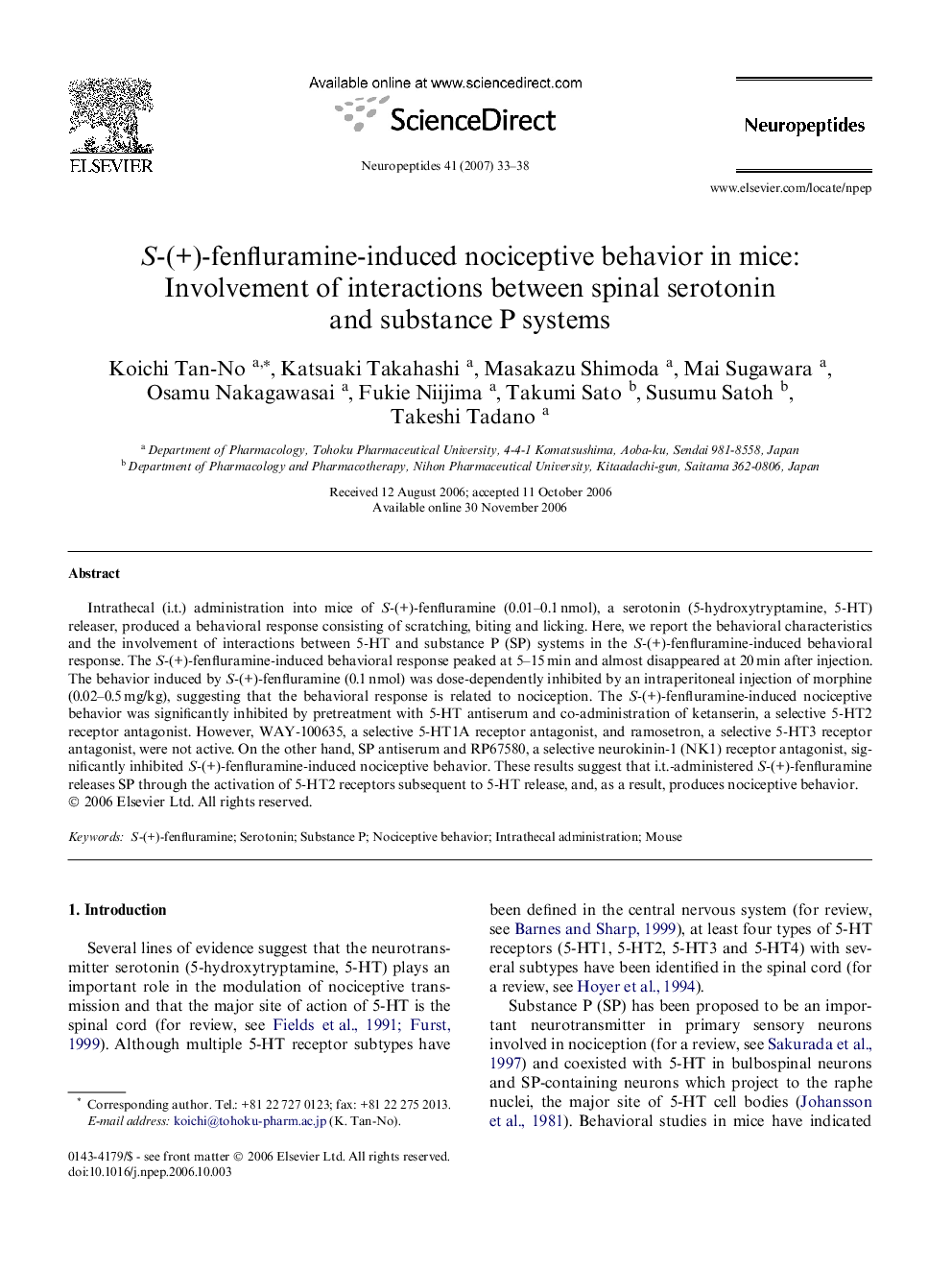| Article ID | Journal | Published Year | Pages | File Type |
|---|---|---|---|---|
| 2808688 | Neuropeptides | 2007 | 6 Pages |
Intrathecal (i.t.) administration into mice of S-(+)-fenfluramine (0.01–0.1 nmol), a serotonin (5-hydroxytryptamine, 5-HT) releaser, produced a behavioral response consisting of scratching, biting and licking. Here, we report the behavioral characteristics and the involvement of interactions between 5-HT and substance P (SP) systems in the S-(+)-fenfluramine-induced behavioral response. The S-(+)-fenfluramine-induced behavioral response peaked at 5–15 min and almost disappeared at 20 min after injection. The behavior induced by S-(+)-fenfluramine (0.1 nmol) was dose-dependently inhibited by an intraperitoneal injection of morphine (0.02–0.5 mg/kg), suggesting that the behavioral response is related to nociception. The S-(+)-fenfluramine-induced nociceptive behavior was significantly inhibited by pretreatment with 5-HT antiserum and co-administration of ketanserin, a selective 5-HT2 receptor antagonist. However, WAY-100635, a selective 5-HT1A receptor antagonist, and ramosetron, a selective 5-HT3 receptor antagonist, were not active. On the other hand, SP antiserum and RP67580, a selective neurokinin-1 (NK1) receptor antagonist, significantly inhibited S-(+)-fenfluramine-induced nociceptive behavior. These results suggest that i.t.-administered S-(+)-fenfluramine releases SP through the activation of 5-HT2 receptors subsequent to 5-HT release, and, as a result, produces nociceptive behavior.
